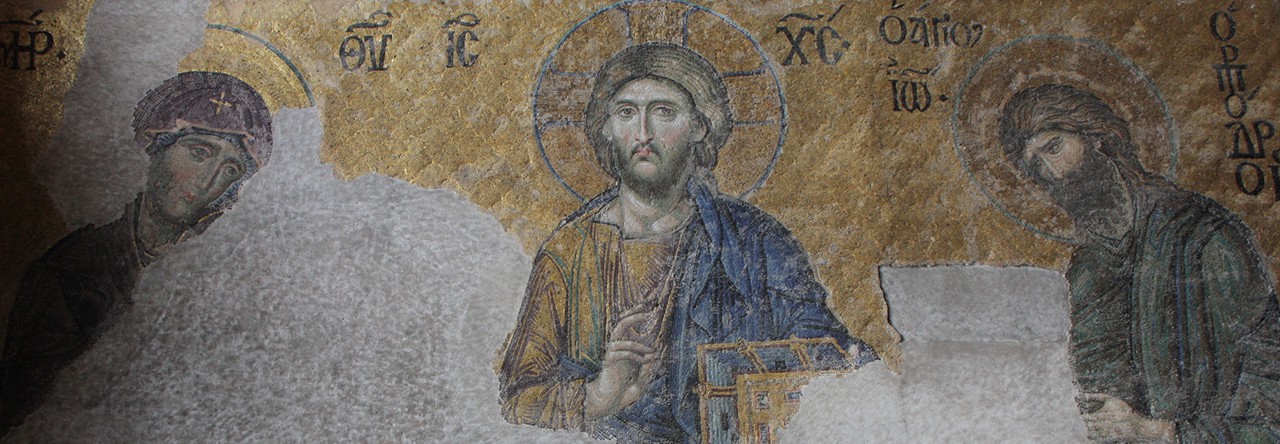This is the 5th blog in this series which began with Two Versions of Constantine the Great. The previous blog is Constantine’s Triumph Over Imperial Rivals. This blog series is considering Constantine the Great as presented in two books: Paul Stephenson’s CONSTANTINE: ROMAN EMPEROR, CHRISTIAN VICTOR and Peter Leithart’s DEFENDING CONSTANTINE.
 Part of the issue of evaluating Constantine’s own commitment to Christianity is that though he submitted his life to baptism just before his death, prior to that dying with Christ, Constantine was an active and ambitious emperor who carried out with full force and intention his will as a monarch. Though he oversaw some changes in civil ritual which moved the empire away from pagan animal sacrifice to the bloodless worship of Christians, Constantine kept firm reign on his personal imperial power over the empire. So did he recognize a new authority in his life to whom he answered- the Church? Leithart and Stephenson evaluate Constantine quite differently on his relationship to Church authority as represented by the bishops of the Church.
Part of the issue of evaluating Constantine’s own commitment to Christianity is that though he submitted his life to baptism just before his death, prior to that dying with Christ, Constantine was an active and ambitious emperor who carried out with full force and intention his will as a monarch. Though he oversaw some changes in civil ritual which moved the empire away from pagan animal sacrifice to the bloodless worship of Christians, Constantine kept firm reign on his personal imperial power over the empire. So did he recognize a new authority in his life to whom he answered- the Church? Leithart and Stephenson evaluate Constantine quite differently on his relationship to Church authority as represented by the bishops of the Church.
“Constantine considered the bishops another group of subordinates, whose spiritual and pragmatic authority was not qualitatively different to his own, just less abundant. As a general, not a bishop, Constantine understood that loyalty to the commander-in-chief was achieved not through consultation but through the chain of command. His generals and their subordinate officers, so long as they were loyal, guaranteed the efficacy of the fighting force and its devotion to the emperor and his goals. So it would be with the Christian Church and its generals, the bishops, who were his imperial subjects. Thus, ‘like a universal bishop appointed by God he convoked councils of the ministers of God…” (Stephenson, CONSTANTINE: ROMAN EMPEROR, CHRISTIAN VICTOR, pp 258-259)
Stephenson accepts a notion that with Constantine begins that Constantinian effect on the church of the church becoming subservient to the emperor. The bishops like subordinate officers in the military are to be loyal to their commander in chief. However Leithart quoting J. Liebeschuetz strongly objects:
“The Church could never be simply the religious department of the republica, as the old religion had been. The Church had its own officers, the clergy, who were absolutely distinct from the officers of the state. It accepted the authority of sacred writings and of traditions which were not part of the Graeco-Roman civilization. . . . The weekly services, sermons, the discipline of penance, and religious instruction offered the clergy means of indoctrination which had no precedent. . . . The incorporation of the Church involved a fundamental transformation of Roman institutions, with consequences that were bound to be very great indeed.” (Leithart, DEFENDING CONSTANTINE, p 153)
So the two modern historians looking at the same historical documentation reach two different conclusions. Stephenson has Constantine bringing the bishops in line with his will as commander-in-chief. Leithart does not believe this happened seeing that the church had a parallel hierarchy and structure to the state and it never submitted itself to state ritual or control. The church had its own teachings and sense of obedience to God. This was part of what had led to the persecution of the church by the state to begin with. Leithart does not see the church as meekly submitting to the state, but rather as triumphing over the state and then working out a new relationship with its former enemy now won over by the love of Christ. As mentioned in a previous blog, Leithart has Eusebius declaring victory for the church over the empire.
“For many Christians, such as Eusebius, the task of the hour was not to integrate the church into the empire. The empire had lost the battle with the church, and it was the empire that should make concessions. The church was not incorporated but victorious; the martyrs’ faith had been vindicated, and the task was now to integrate the emperor into the church.” (Leithart, DEFENDING CONSTANTINE, p 183)

Pingback: Constantine’s Triumph Over Imperial Rivals | Fr. Ted's Blog
Pingback: Constantine and the Christian Bishops (2) | Fr. Ted's Blog
Pingback: Elsewhere (07.27.2011) | Near Emmaus